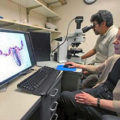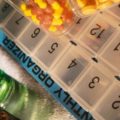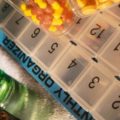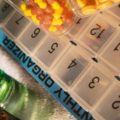
If you’re concerned by your child’s nagging sore throat this winter, it may come as some consolation that doctors are losing patience with outdated antibiotic treatments designed to treat strep throat. Doctors attending an infectious diseases meeting in Washington this weekend were in agreement that current treatments for the millions of sore throats suffered by U.S. children are just not up to scratch.
Results presented at the annual Interscience Conference on Antimicrobial Agents and Chemotherapy show that when U.S. children with sore throats are prescribed older, more traditional antibiotics, such as penicillin and amoxicillin, they are much more likely to have to revisit their doctor for stronger medications. Pediatricians at the University of Rochester Medical Center found that 25 percent of children treated for strep throat with penicillin ended up back in the doctor’s office within three weeks of treatment, and children treated with amoxicillin returned 18 percent of the time.
Yet despite the high rate of relapse among children treated with traditional antibiotics and the apparent success of cephalosporins, doctors across the nation continue to prescribe ineffective medications. Studies have shown that approximately 60 to 80 percent of children treated for strep are prescribed amoxicillin; 10 to 20 percent are prescribed penicillin; and just 10 to 20 percent receive a cephalosporin.
What should be taken into account when looking at these statistics is that doctors prescribe particular medicines to patients for various reasons. Pichichero says that nearly all drugs fail some of the time, and doctors accept some risk of failure as a trade-off for other factors like convenience, cost to families, and likelihood that a less powerful medication can kill the bug just as well as a more powerful drug. In the case of throat infections, doctors try to preserve their strongest antibiotics for the most severe cases. But most doctors would view a drug that fails for one-in-four patients – as penicillin does in strep cases – as unacceptable. “Most doctors are shocked to learn of the high failure rates of the older medications,” said Pichichero.
Parents also play a role in how successful a prescription for strep will be. It is believed that anywhere from 30 to 70 percent of parents make the mistake of discontinuing antibiotic medication for their children prematurely, or giving them leftover medication later on. This can be attributed to a parent’s misguided belief that a whole course is too much medicine for one child, or, more commonly, parents often believe the drugs are no longer needed since the child is feeling better. This scenario can often lead to relapse and an undesirable extended exposure to yet more antibiotics. Repeated exposure to penicillin and amoxicillin shifts the center of microbial power, resulting in a throat full of bacteria that actually shield strep germs from the older drugs. At least four types of bacteria that Pichichero called “co-pathogens” become more dominant in the throat of someone who has received the drugs frequently. A parent’s good intentions can directly lead to children becoming sick on-and-off for weeks or months, as the strep germ isn’t quite killed off but instead lingers in the child’s body, with dire consequences for the still infected child’s friends or classmates.
One of the main reasons that the new-generation antibiotics are likely to be far more effective against strep than older treatments is the shorter dosage period. Pichichero said children and parents are much more likely to adhere to taking all the prescribed medication in four or five days rather than 10 days.










Comments are closed.